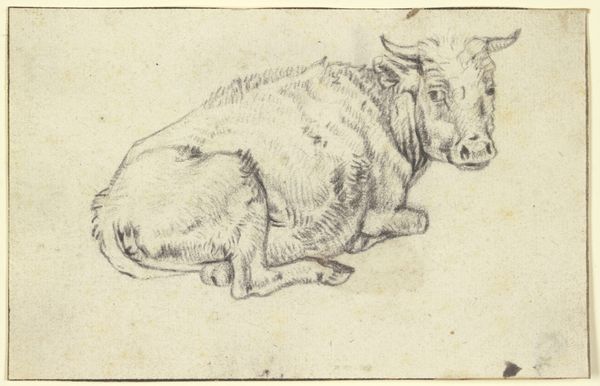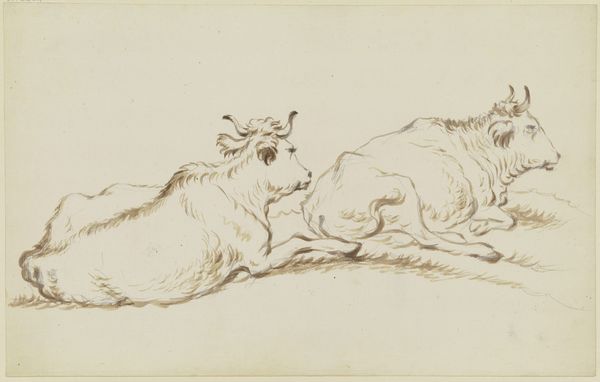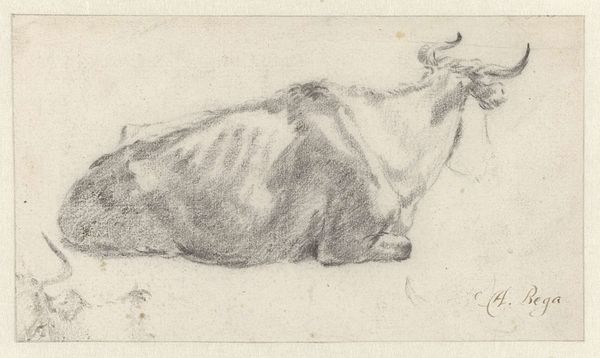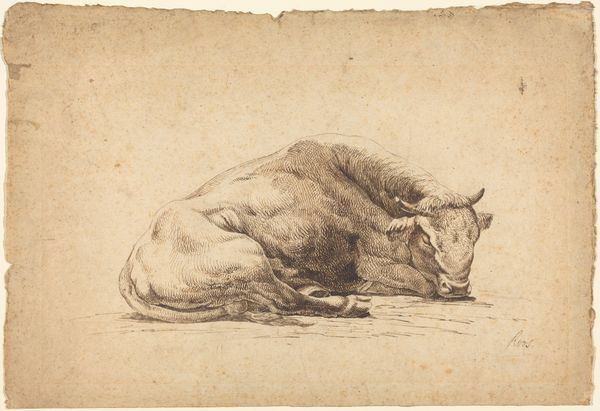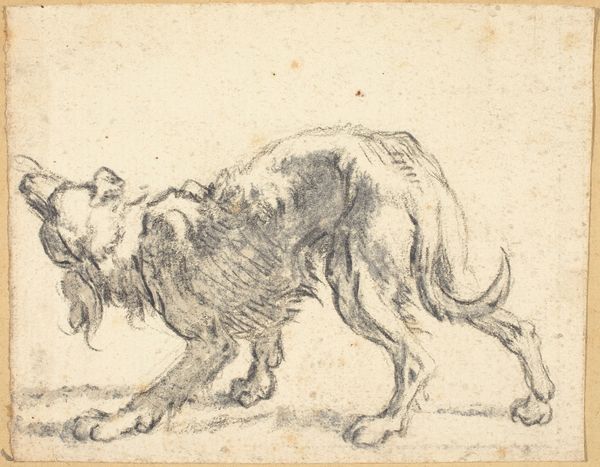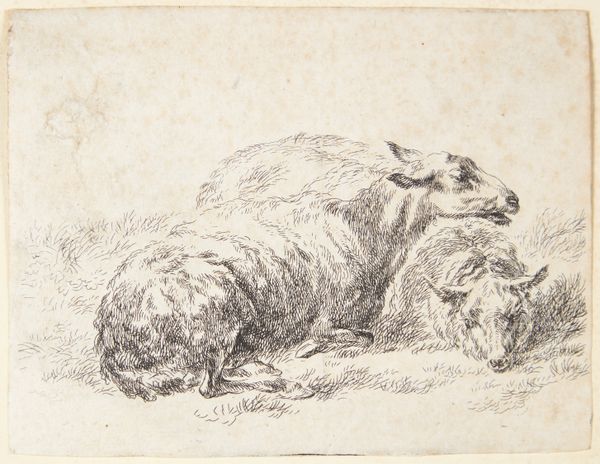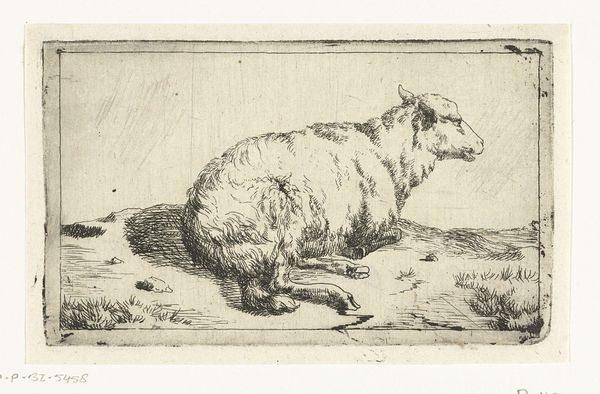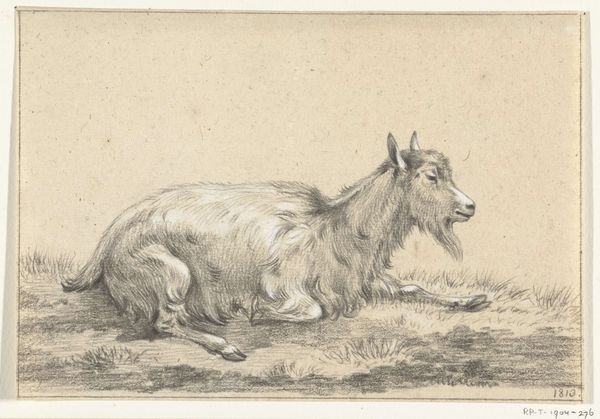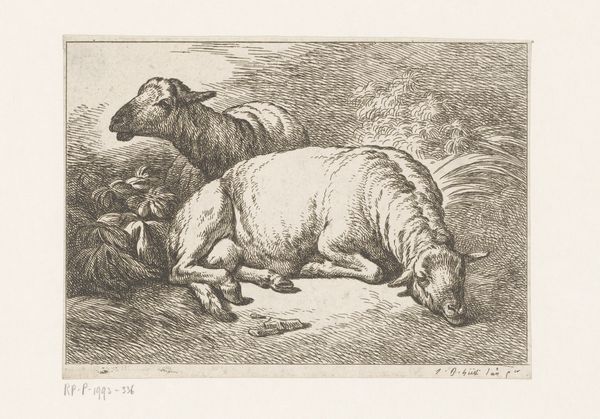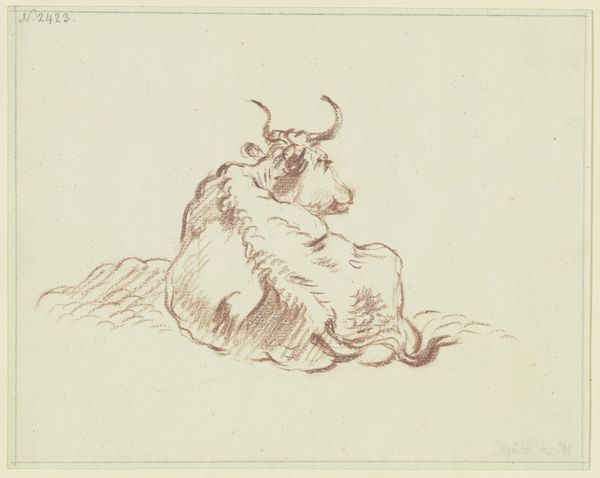
drawing, pencil
#
portrait
#
drawing
#
animal
#
dutch-golden-age
#
landscape
#
pencil drawing
#
pencil
#
realism
Dimensions: overall: 8 x 13.1 cm (3 1/8 x 5 3/16 in.)
Copyright: National Gallery of Art: CC0 1.0
Editor: We’re looking at Paulus Potter’s “Resting Horse,” a pencil drawing. The way the horse is curled up makes it feel so vulnerable, and yet, there’s a quiet strength there too. What do you see in this piece? Curator: I see an echo of something deeply embedded in our cultural memory. The horse, throughout history, has symbolized power, freedom, even nobility. But here, depicted in repose, it sheds those layers of cultural armor. Do you notice how Potter uses the delicate medium of pencil? Editor: Yes, it's interesting that such a powerful animal is portrayed using such delicate strokes. Curator: Exactly! This deliberate choice collapses the distance between the ideal and the real. The drawing medium invites us to see the horse not as a symbol, but as an individual—exposed, weary perhaps, but undeniably alive. Consider the position - curled, looking back... Editor: Like it is guarding something, or wary? Curator: Precisely. Perhaps wary of losing something hard-won. Perhaps a peace, an ability to rest. In art from this period, particularly Dutch Golden Age, representations of animals move past allegory, and closer to our modern ideas of animal sentience. Do you see any of that connection? Editor: Definitely. Looking closer, the detail in the eye conveys that watchfulness. It really changes how I view other symbols of power. Curator: Indeed. Potter’s seemingly simple drawing reminds us that symbols, even the most enduring ones, are always subject to reinterpretation, inviting us to reconsider what we project onto them.
Comments
No comments
Be the first to comment and join the conversation on the ultimate creative platform.
